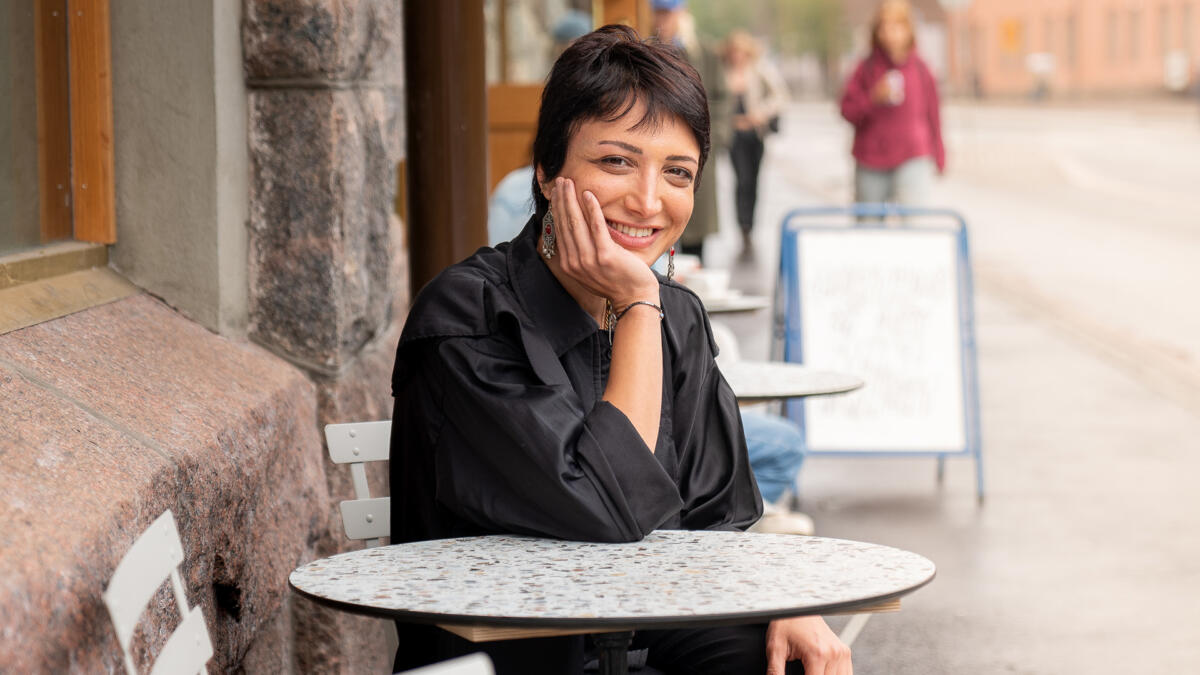“Mother, curator, dance writer” – Professor Maryam Bagheri Nesami sees artistic research as a potential site for practising freedom
Originally from Iran, Maryam Bagheri Nesami has lived as a migrant over a decade. Now she works as a professor of artistic research at Uniarts Helsinki’s Theatre Academy, specialising in dance, curatorial practices and choreo-writing around them.

An independent artist that moves around dance. A dance writer. A dance person – but not necessarily a dancer. A researcher that is interested in solo performance and its potential to practise freedom.
This is how Maryam Bagheri Nesami, a professor of artistic research at Uniarts Helsinki’s Theatre Academy, describes herself.
Nesami’s professorship started in May 2024, and that’s why she is still in the process of settling into her new position. Her new job also meant moving her whole family through hemispheres and seasons: from New Zealand to Finland.
But this was not the first and biggest seasonal shift in Nesami’s life.
Maryam Bagheri Nesami was born and spent the first decades of her life in Iran. In Tehran, she completed a bachelor’s degree in cultural and artistic management and a master’s degree in artistic research. But at the same time, she was part of the underground dance community.
“Dance in Iran is problematic, but it doesn’t mean that it doesn’t exist. I didn’t get a systematic training in dance but a bricolage of different practices. Later I felt more connected to the practitioners who were working in a more experimental way,” she says.
Questions of care, non-violent resistance, inclusion and freedom were an important part of Nesami’s artistic practice from the very beginning.
The same questions became important elements in her career in later years. A significant event in her career was Nesami’s first immigration to New Zealand in 2015, when accompanying her husband for his doctoral studies.
In Auckland, volunteering projects in the arts field introduced Nesami to people who would later become her important academic colleagues and even her thesis supervisors. Nesami started her doctoral studies at the University of Auckland in 2017 and completed her degree in 2021.
Her doctoral thesis focused on the choreographic practice of solo performance as a potential site for practicing freedom.
“Artistic research has the potential to be a project of activism, not only in arts but also beyond. It can play a critical role in promoting and enacting social equality,” she says.
“Artistic Research challenges the artistic canon and the dominant aesthetics, kinesthetics and ethics that sometimes result in gatekeeping, causing misjustice, injustice, and mistrust. It activates the eccentric subjects and positions, and the practices and languages that are far-reaching.”
Since completing her doctoral degree, Nesami has continued to work on the same themes in her art and research.
Even before she became a professor at Uniarts Helsinki, she met Nordic and Finnish colleagues in academic and artistic contexts and formed important friendships. Through these connections, she was involved in two post-doctoral research projects funded by the Kone Foundation, one of which is still ongoing. She has also worked as a curator for several art festivals, most recently in Trondheim, Norway.
In their projects, Nesami and her colleagues have created opportunities for cooperation between performing arts professionals in European countries and in the Middle East. Collaboration has happened mostly in the mode of roundtable discussions. This has led Nesami to think more deeply about curating and how it can be done more ethically.
“I’m interested in activating care in the practice of curation. The relationship between guests and the hosts can include a risk of discrimination and violence,” she explains.
Artistic research has provided Nesami with tools to analyse dance performance, choreography and curatorial practices. Today, Nesami sees herself primarily as a choreo-writer.
“Choreo has a root in the term chora, and to my understanding it is an alternative site/space for negotiating the boundaries between the possible and impossible. Therefore, the practice of choreo-writing for me is a hopeful practice.”
The Nesami family moved from New Zealand with their 2-year-old daughter. Since her birth, motherhood has become the most central part of Nesami’s corporeality. Motherhood merges with her work as an artist and researcher concerned with embodiment.
“I call myself a mother, a curator, a dance writer, all in one, hyphenated term. I write about, for, through and with dance. This gives me the opportunity to call myself a dance person,” she laughs.
Photo: Petri Summanen / Uniarts Helsinki